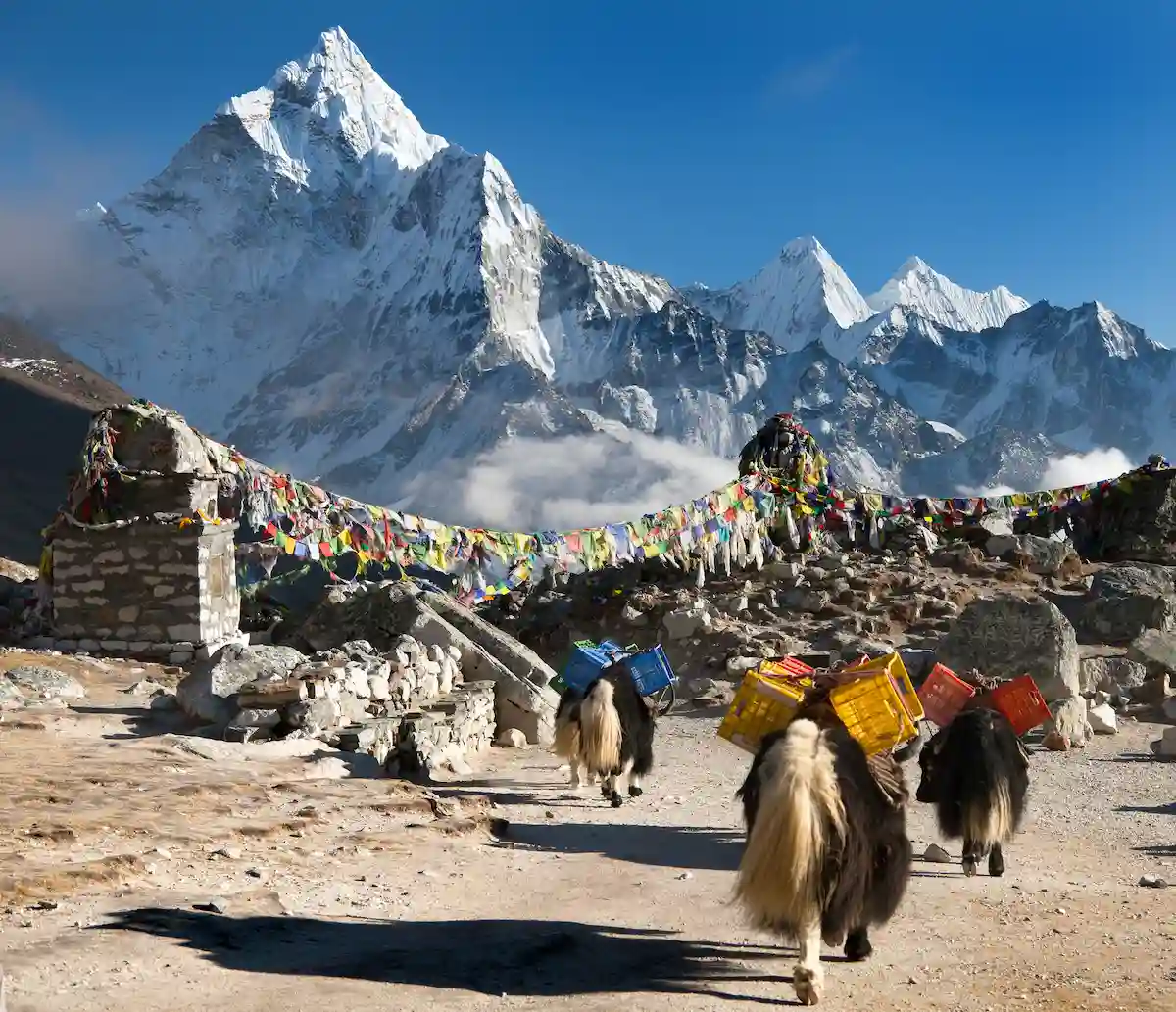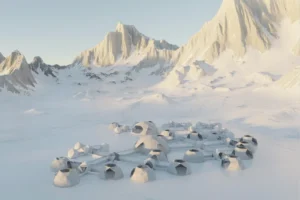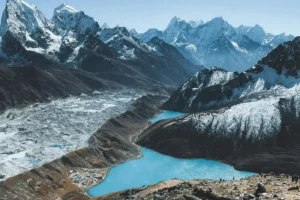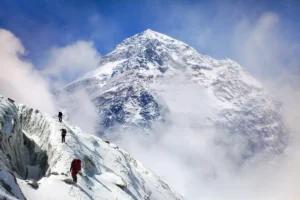
Snow and ice in the Hindu Kush Himalaya are rapidly disappearing, with severe implications for people and nature, ICIMOD reports.
The new ICIMOD report – ‘Water, Ice, Society, and Ecosystems in the Hindu Kush Himalaya’ alerts about the unprecedented and largely irreversible changes in the Hindu Kush Himalaya cryosphere, driven by rising global temperatures, and threaten two billion people and are accelerating species extinction.
A major new assessment report from eight-nation body, the International Centre for Integrated Mountain Development (ICIMOD), reveals the changes to the glaciers, snow and permafrost of the Hindu Kush Himalayan (HKH) region driven by global warming are “unprecedented and largely irreversible.” The study Water, Ice, Society, and Ecosystems in the Hindu Kush Himalaya (HI-WISE) draws on recent scientific advances to map for the first time the links between the cryosphere, water, biodiversity and society in the region, charting the impacts of rapid changes in glaciers and snow on people and nature.
The report finds that glaciers in the HKH could lose up to 80% of their current volume by the end of the century, on current emissions trajectories. Snow cover is projected to fall by up to a quarter under high emissions scenarios – drastically reducing freshwater for major rivers such as the Amu Darya, where it contributes up to 74% of river flow, the Indus (40%) and Helmand (77%). The extent of frozen ground (permafrost) is decreasing, which will lead to more landslides and problems for infrastructure at high elevation.
Key Findings
- Glaciers disappeared 65% faster in the 2010s than in the previous decade.
- On current emissions pathways 80% of glaciers’ current volume will be gone by 2100.
- Availability of water is expected to peak in mid-century and then decline.
- Vulnerable mountain communities are already experiencing major adverse impacts: loss and damage. to lives, property, heritage, infrastructure.
- Floods and landslides are projected to increase.
- Impacts on fragile mountain habitats are particularly acute.
The study warns that communities and governments need urgent support and finance to prepare for the accelerated impacts on societies and nature that cryosphere changes will cause as temperatures rise, with current funding flows to the region woefully insufficient to the scale of the challenges the region will face. Scientists predict devastating consequences for water and food security, energy sources, ecosystems, and the lives and livelihoods of hundreds of millions of people across Asia, many of which will be beyond the limits of adaptation.
Landmark report on impacts of disappearing snow and ice in the Hindu Kush Himalaya – current emissions path threatens two billion people and is accelerating species extinction. Most accurate assessment of changes to the Asia high mountain cryosphere to date warns of grave consequences for human life and nature. Peer-reviewed study from leading mountain institute finds that Hindu Kush Himalayan glaciers disappeared 65% faster in 2011–2020 compared with the previous decade.
Report warns policymakers need to prepare for the cascading impacts of climate change in the critical mountain biome, which will affect a quarter of the world’s population. Urgent international support and regional cooperation now vital for inevitable, near-term loss and damage, and to help communities’ adaptation efforts.
The report’s publication comes after cryosphere scientists at the Bonn Climate Change Conference sounded the alarm at the speed and scale of ice-melt worldwide, which is far outpacing worst-case scenario projections from the IPCC; with a new paper showing Arctic waters could lose all their summer-end sea ice as early as 2030.

Ice and snow in the Hindu Kush Himalaya are an important source of water for 12 rivers that flow through 16 countries in Asia, providing freshwater and other vital ecosystem services to 240 million people in the mountains and a further 1.65 billion downstream.
Vulnerable mountain communities are already experiencing major adverse impacts – including disasters causing loss and damage to lives, property, heritage and infrastructure, driving displacement and leaving psychological impacts.
Coupled with increased population growth and economic activity in the region, the exposure to these hazards poses the risk of increased loss and damage, including population displacement.
The study finds that availability of water in the HKH is expected to peak in mid-century, driven by accelerated glacial melt, after which it is projected to decline, with variability in meltwater from glaciers and snow resulting in huge uncertainty for mountain communities and large lowland populations.
Floods and landslides are projected to increase over the coming decades, with slow-onset hazards, such as sedimentation and erosion and fast-onset hazards such as glacial lake outburst floods (GLOFs), occurring often concurrently in the same catchments. 200 glacier lakes across the HKH are deemed dangerous, and the region could see a significant spike in GLOF risk by the end of the century.
Species decline and extinction have already been reported, along with range shift of species to higher elevations, ecosystem degradation, decrease in habitat suitability, and invasion of alien species.
Coupled with increased population growth and economic activity in the region, the exposure to these hazards poses the risk of increased loss and damage, including population displacement. The report found that the effects of the changing cryosphere on fragile mountain habitats are particularly acute, with cascading impacts reported in most ecosystems and affecting most inhabitant species.
Species decline and extinction have already been reported, along with range shift of species to higher elevations, ecosystem degradation, decrease in habitat suitability, and invasion of alien species. With 67% of the HKH’s ecoregions and 39% of the four global biodiversity hotspots located in the HKH remaining outside protected areas, nature is particularly vulnerable to climate impacts.
This new assessment report, co-authored by 35 researchers and scientists from 12 different countries and 23 institutions, focuses on the ecological and human impacts of changes in the cryosphere. The assessment underwent a comprehensive double-blind peer review process.



